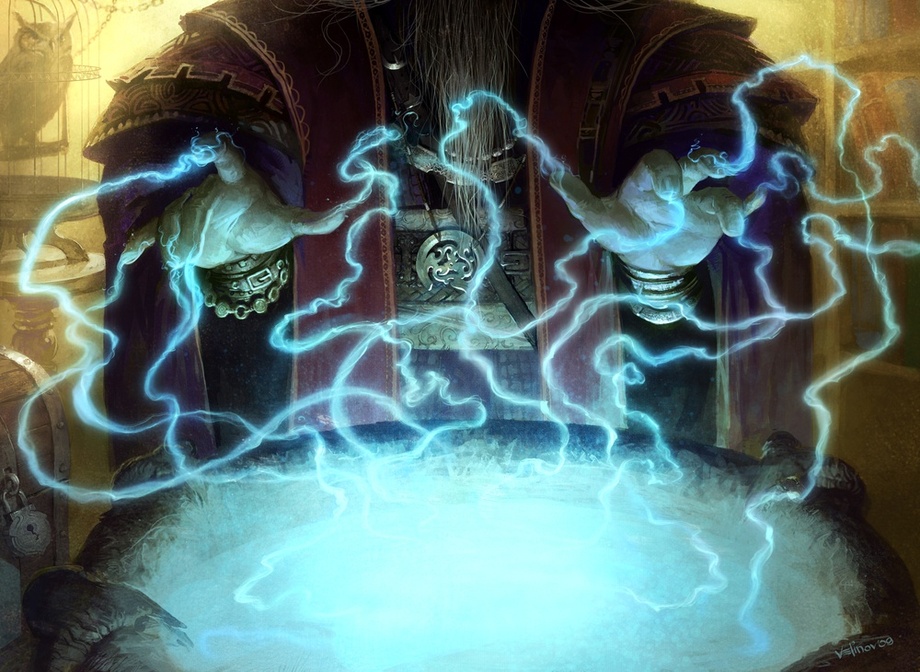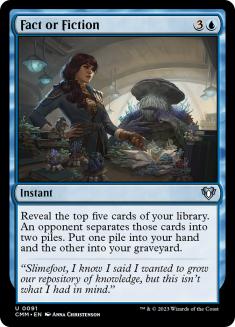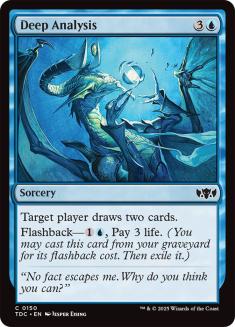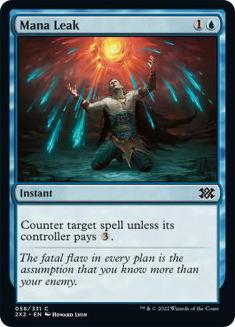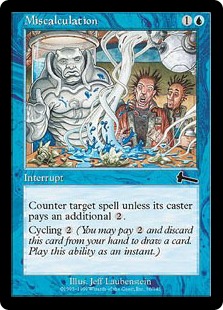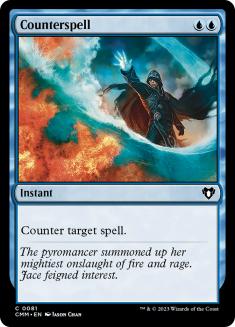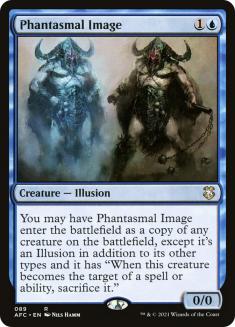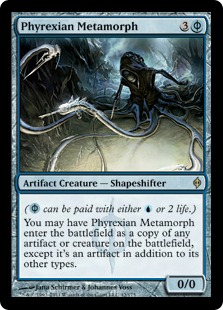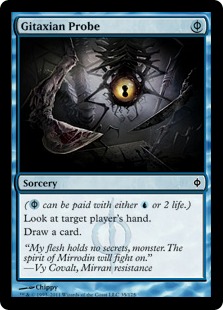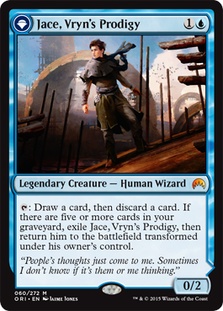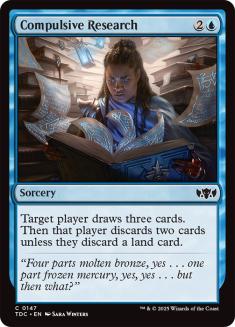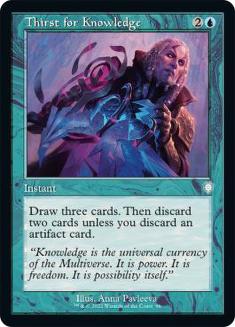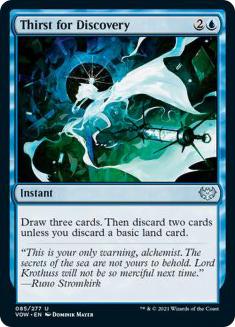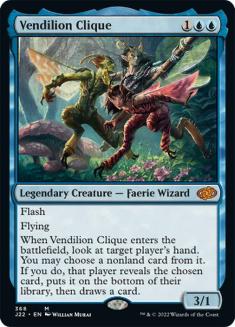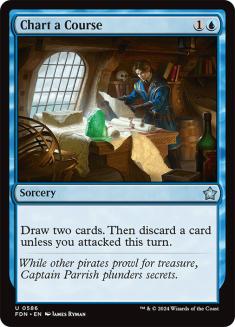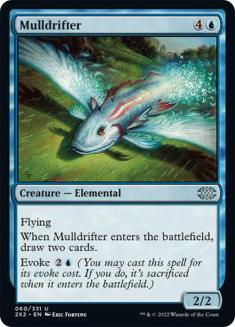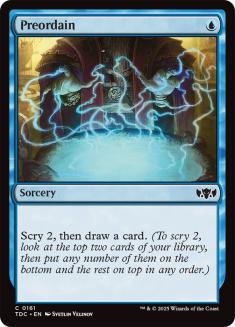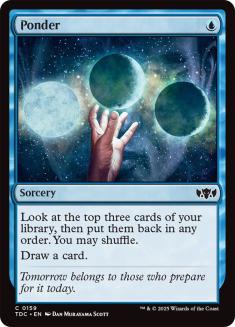Happy July, gamers, and welcome to the second installment of my series on the most Cubeable cards in Magic! Last week I set the framework for the series and went over my picks for the Top 10 most Cubeable white cards, and this week I’ll be tackling blue.
Blue is a toughie, because it’s very easy to make blue the most powerful color in a Cube even if you try really hard not to. Some of this is because blue’s card selection abilities can be subtle. Some is because blue just gets a lot of effects that are super-not-okay, and just by curating your Cube by the established color pie, blue ends up with some really unfair abilities. White is a lot easier to tinker with on a card-by-card basis if you accidentally go over the line, but blue will often be a color with an entirely problematic framework.
Building Blue Responsibly
Two general notes that I like to keep in mind when I’m not trying to simply build a Cube of Magic’s most powerful cards:
- Forcing blue decks to get involved in combat tends to tone them down significantly.
- You want to be careful with how much card advantage you offer to blue decks at cheap rates.
Fact or Fiction was a multi-format-defining card for years, and it’s fully capable of completely taking over games even in higher-powered Cubes today. My focus today is going to be on cards closer to Deep Analysis, which are still very powerful but are less commonly overwhelming.
This comparison is going to be a lot more resonant for players who were playing in the early 2000s, and I get it if your impression of that statement is to say “Deep Analysis sucks!”, but I assure you this wasn’t always the case and I implore you to keep reading.
Without further ado, let’s count down my picks for the most Cubeable cards in blue!
10. Mana Leak (and Other Assorted Two-Mana Counterspells)
Counterspell is a powerful card, going all the way from Pauper Cube to Vintage Cube. The more synergy-driven and thematic a Cube is, the less you’re going to want counterspells around to sabotage all of the cool archetypes you’ve seeded for your players to explore. That said, I’ve found that, regardless of power level, it’s always good to have a little countermagic around. Maybe that’s a bias that has stuck with me from my very first deck featuring four copies of Counterspell proper and that just being part of the game for me, but this bias has only been reinforced over the years with counters being a way to balance that some decks just have much more powerful endgames than others. I’m always an advocate of featuring good aggressive decks in Cube as well, which push back significantly against counterspells.
As for which counterspells to feature, there’s a wide range of options. Some Cubes will want a lot of them and some will want fewer. I’ve highlighted Mana Leak because it always feels like a very honest card, though featuring Mana Leak, Counterspell, and Miscalculation is a fairly common suite. I’ve a fan of Lose Focus, and Remand sees quite a lot of Cube play as well. Going deeper for cards like Lofty Denial or Thassa’s Rebuff is a great way to support more creature-focused blue decks.
When I mentioned that blue gets a lot of unfair effects, some players might have been thinking counterspells, but one-for-one counters fall firmly under my definition of tame. I consider them a necessary and important element of most Cube metagames.
9. Phantasmal Image
A blue effect that’s totally nonsense on power level and is generally unfun to play against is stealing permanents. Control Magic and company rank very low for me on cards that positively contribute to Cube gameplay. Clones, on the other hand, are awesome in low-power and high-power Cubes alike.
At lower power levels, Phantasmal Image allows you to copy your synergistic pieces, such as a sacrifice payoff or a tribal lord. At higher power levels, Phantasmal Image gives you some ability to play on when your opponent puts a Griselbrand on the battlefield. All the while, the Illusion drawback means that your opponent will generally be capable of foiling your plans. The card’s power level is high in a way that is fun and interactable, and I don’t have an unkind word to say about Phantasmal Image.
8. Phyrexian Metamorph
I do rank Phyrexian Metamorph slightly higher for Cube inclusion, though. Being an artifact offers synergies for many Cubes, as does being able to copy noncreature artifacts. Being castable off =only generic mana is a major point in Phyrexian Metamorph’s favor, too.
That does beg the question: if I consider Porcelain Legionnaire less of a white card because of Phyrexian mana, then why does Phyrexian Metamorph rank on my blue list? Ultimately, how to categorize colors with mechanics like this ends up being at the discretion of the Cube designer, but my answer is that Phyrexian Metamorph tends to show up much more often in blue decks than nonblue ones. Some of this is because blue offers those artifacts-matter synergies, and some is because blue decks tend to be better set up than nonblue decks to leverage Clone effects. Copying an opponent’s permanent with the intention to bounce theirs, for example, is a common play pattern with Clones.
Phyrexian Metamorph is a pretty high pick in most Cube environments and a favorite of many players. Despite this, the card doesn’t feel like it does anything unfair, and is a one-for-one barring the impact of whatever card that it copies. I’m always happy to see Phyrexian Metamorph in a Cube pack or game.
7. Gitaxian Probe
Another Phyrexian mana card, and another that I will argue ends up in blue decks more often than nonblue decks. Sure, I’ll play Gitaxian Probe in my red decks or really whatever deck, but blue combo and spells matters decks are the reason that Gitaxian Probe makes the Cube list.
Looking at the opponent’s hand gives blue players vital information on how to navigate with their counterspells, and being a free spell that replaces itself makes Gitaxian Probe an easy inclusion for me in any Cube trying to facilitate a Prowess or Storm shell. It’s also just fun that you get to play Gitaxian Probe in Cube seeing as the card has found its way onto plenty of Banned Lists. The things that make Gitaxian Probe bannable in Constructed don’t exactly translate to singleton Cubes, though, which makes players feel like they’re getting away with something that isn’t ultimately that unreasonable.
I like Gitaxian Probe in Pauper Cube, I like Gitaxian Probe in Vintage Cube, and I’ll feature it in any Cube in-between with a spells-matter theme.
6. Jace, Vryn’s Prodigy
I like a Merfolk Looter. I love a Looter il-Kor. When it comes to non-rarity-restricted Cubes, though, the way that Jace, Vryn’s Prodigy scales with environments fascinates me. On the one hand, you have a card that serves as a discard outlet and alternate win condition for Reanimator decks in the most powerful Cubes, and on the other, you have a creature that dies to Shock.
The Magic Origins cycle of creatures that transform into planeswalkers is among my favorite cycles ever printed, and the shields-down moment of casting a mopey 0/2 in the hope of untapping and getting a solid planeswalker is exciting every time. Few cards have that level of built-in tension, and while Jace is usually a must-kill creature, the ease of doing so makes the card pretty reasonable to play against.
I’ll also reiterate that I’m a strong proponent of not skimping on powerful removal spells in Cube, and if you find yourself on the other side of that issue, then you’ll probably not appreciate Jace, Vryn’s Prodigy either. For my money, though, gameplay doesn’t get much better than this.
5. Compulsive Research (and Assorted Thirsts)
Compulsive Research is powerful in Pauper Cube and will make my blue decks in Vintage Cube more often than not. The card is just a good rate that often involves in card advantage but isn’t backbreaking. Three mana is a significant cost, and spending that mana at sorcery speed takes the shields down for your countermagic. That’s not true for the card’s instant-speed counterparts, which makes them less suitable for lower-power environments. That, plus Compulsive Research’s common status for Pauper Cubes, is why Compulsive Research headlines this category.
Three mana is getting to be on the high side for a card to be decent support for spells-matter and any strategy that cares about discarding cards, but it tends to clear the bar more often than not. Again, the card gets the nod largely for being awesome in Pauper, and it really just can’t be that bad almost anywhere else.
4. Vendilion Clique
We love looking at the opponent’s hand, don’t we, gamers? That’s not an insignificant part of Vendilion Clique’s strengths, but the flash flying 3/1 body is a big part of why I consider the card a solid inclusion for a wide range of Cubes.
As I said at the top of the article, I like making blue care more about combat to scale the color down for lower-power environments. Vendilion Clique has evasion, high power, and can be used as a Neck Snap-type effect in a pinch. You can muck up the opponent’s hand a little while you’re at it, but this tends to be balanced well by the card’s general fragility.
Vendilion Clique’s ability to interact with the opponent’s hand is what makes the card playable in Vintage Cube, and the card’s inability to fight through 1/1 flying tokens is what makes it very reasonable to have around most everywhere else. The more powerful the Cube, the higher a pick Vendilion Clique is, though it’s no slouch in lower-power environments either.
3. Chart a Course
Whether you’re trying to attack with Slitherblade or discard Archon of Cruelty, Chart a Course is the right tool for the job. Chart a Course is realistically making somebody’s deck every time in any Cube, but in my experience it’s never groan-inducing. It’s just solid card selection or advantage at sorcery speed for an extremely appropriate cost.
The only downside that Chart a Course has compared to Compulsive Research is that it’s an uncommon, but it’s a significantly greater value add to blue decks in non-Pauper Cubes. Chart a Course is only a miss for the most thematic of Cubes, and that’s assuming that the themes don’t include spells-matter, discard-matters, and attacking with creatures.
2. Mulldrifter
If you don’t love Mulldrifter, I am truly sorry for the lack of joy and whimsy in your life. Mulldrifter is among the most powerful commons ever printed, so it’s not for every Pauper Cube, but it’s a non-negotiable inclusion in mine and is totally playable in Vintage Cube.
Mulldrifter doesn’t match a lot of themes, but is a nice one to include in a Cube with a blink theme. Evoke can also work well with sacrifice outlets, but I’ll be real and say that I’m casting Mulldrifter to cast Mulldrifter. A Divination that rewards you with a Wind Drake if you have the time and patience to pay the five is everything I way to be doing in every Limited environment, and it can hang even as power levels skew higher.
If I see a Mulldrifter in a pack, I will smile. If Mulldrifter is in my deck, I will hope to draw it. And if my opponent casts Mulldrifter, I will give them a high five.
1. Preordain (and the Other Ones)
There are a lot of one-mana cantrips in Magic, and the most powerful ones scale very well from low-powered Cubes to high-powered ones. Preordain is just kind of messed up, but in a joyful way for Cube. It increases a deck’s consistency, but it takes up a pick and a slot in your deck, so there’s still some onus on figuring out what you’re trying to make happen with your card selection. Even still, it’s a powerful effect for spells-matter decks in lower-powered Cubes and helps you find your busted stuff in higher-powered ones.
You can get into Serum Visions, Consider, and a really long list of other cantrips as you flesh out a Cube, but I really like including Preordain and Ponder for similar reasons to Gitaxian Probe. You just can’t play with these cards in too many places, and while the selection that they offer is much more powerful, it’s just more fun to play with consistent Cube decks. Players often talk about how drafting is more fun than playing games, and I find that having a good clip of powerful card selection cards to allow players to more consistently do their thing makes the games much more desirable.
The Cantrip Factor
I like good cantrips for very similar reasons to why I like Thraben Inspector and Legion’s Landing. They keep the cards coming and give you things to do with your mana. Missing land drops and passing the turn without casting spells both stink, and while they’re an important part of the game, I do find it equally important to go to great lengths to increase player agency and engagement. Good card selection goes a long way on this front.
And it’s for that reason that Preordain and Ponder rank so much more highly on my list than Gitaxian Probe. Gitaxian Probe is a powerful card that facilitates certain synergies, but it doesn’t smooth out draws all that much, and I can take it or leave it on that front.
Barring a very thematic focus for my blue column, I always start with some powerful cantrips. It’s important then to also pay mind to how the nonblue cards filter their draws and optimize their mana use, but I always find myself trying to bring the other colors to blue’s level, rather than mitigating blue’s strength.
Blue to Black
And that’s a wrap on blue! Blue is arguably the most difficult color to balance for most Cubes, and I find that keeping things mostly to a one for one or at least generally inefficient rate on card advantage goes a long way. Not pulling any punches with the other colors is also paramount to allowing them to keep up with blue. The cards on my blue list are generally quite powerful, but in a way that is fun and engaging, which is always my goal for Cube.
That’s all for now. Check back next week when I tackle the ten most Cubeable cards in black!

